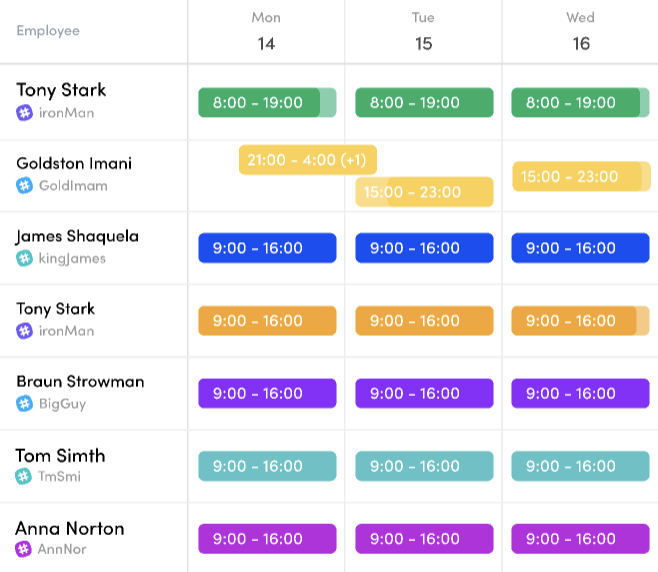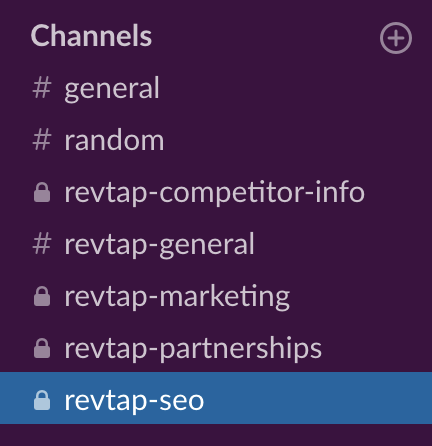Shift work is when employees are assigned a block of time to handle the particular operations in their company. Shift workers could be working on the customer support front, sales front or any role where customers need assistance 24/7. By hiring shift workers, you can deliver quality to your customers while ensuring you aren’t overworking your employees. But doing so requires efficient shift management.
Shift work sounds like the next best thing for 24/7 businesses but not every HR has mastered shift management. Shift managers deal with many challenges— overlapping schedules, being understaffed due to an emergency, and lack of time tracking, to name a few. But, shift management doesn’t have to be so complicated.
AttendanceBot’s shift management feature allows you to set up shift schedules, track time, reassign empty shifts on the go, and get real-time updates. With this blog, we want to simplify shift management for you so that you can increase team productivity for your shift workers and optimize schedules for a smooth-running business.
Let’s dive into the 8 steps you need to follow for optimized shift management.
Top 8 Hacks to Effective Shift Management
1. Hire the right people
Not everyone is cut out for shift work. But, unlike hiring designers and developers, there is no proven testing process that can help you determine the right person to join as a shift employee.
When hiring for your shift work roles, it’s important to first understand how many shift employees you require. For instance, if you have high volume traffic on your online store, you can hire 3 to 4 people to take up support.
Here are a few pointers when hiring for this role:
- Ensure the potential candidate has the qualifications for that line of work or is trainable to pick up the role. For instance, if this is customer support, you can test them on their communication skills. (For this role, managers also need a thorough guide to talking to customers).
- Your potential candidate should also be available at different times to pick up shift slots.
- Vacation time may be limited but you can always give them the option to work remotely if required.
- Ensure one or two of the shift employees you are hiring is open to taking night shifts.
- Set targets and incentives to allow employees to earn more than their base pay.
Entrepreneur wrote a brilliant article on how to hire the best team every time. Read it here.
2. Set up a standardized onboarding for your shift workers
Once hired, it’s crucial that you provide a thorough onboarding to these shift employees, giving them a rundown of their role, the products/services you sell, the objective of their role, and any tech tools you use on a daily basis to facilitate better outcomes.
Consider documenting the products/services and the features, types of customers you have, the scope of work, ground rules for communicating with customers, and best practices. Ensure this document is easy to access for all your shift employees.
Be present for your shift employees within their first week to instantly help them with any questions they have. Better equip your shift employees, get them comfortable with your work environment, and ensure they are well-versed with your company to help them succeed in their role.
Read our blog on how to use Slack for onboarding.
3. Plan schedules with the dashboard
You can easily set up shift schedules on AttendanceBot for each of your shift employees. The visual dashboard lets you can view each employee and their shift hours for each day, allowing you to make changes. Shift hours can be set in a recurring manner.
The shift planner on AttendanceBot notifies you when there is a double-booking or absentee, letting you quickly take action and find another shift employee to fill the empty slot.

When planning out schedules, don’t forget to go through this checklist to ensure you are setting schedules that aren’t difficult for your employees to stick to. Here are a few ground rules you can have when planning out the schedules:
- Set up schedules a month prior.
- Keep overtime to a minimum.
- Let employees choose whether they want two 4 hour slots or one large 8-hour slot.
- Give employees some breathing space with 2 days off every week.
- Avoid consecutive night shifts to maintain a healthy body clock.
- During peak season, increase pay for overtime hours. You can also hire temporary shift employees to take the load.
- Stay connected with your night shift workers to ensure they aren’t facing problems.
- Check-in with shift employees every month to understand difficulties so you can optimize their shift.
4. Set up a Slack channel for the particular department
A dedicated Slack channel for your shift employees makes communication easy. Such a channel can allow shift employees to leave messages about any crucial details that will be helpful to the next shift employees and to ask questions about their work.
Having open communication allows shift workers to take more ownership and find solutions without needing your assistance all the time. They will also be able to bond with their co-workers virtually, despite not having shared work hours.
Besides information sharing, shift employees who have an emergency can quickly ping on the channel so that you or the manager can find a replacement and avoid empty shifts.
Simple channels like these are a good start too:

Haven’t used channels before or not sure how to use them? Here are 10 ways to make your Slack channels more effective.
5. Enable shift workers to use the bot
Since AttendanceBot is integrated right into Slack, your shift workers can query the bot about the upcoming shifts, and get notifications an hour before their shift so they are on time. Ensure your shift employees know how to use the bot so they can work with it and avoid having to rely on their Google Calendars or a reminder app to keep track of their upcoming shifts.
As the manager, the bot allows you to make changes with the shift schedules within Slack when someone is on leave. A shift employee could fall sick or have an emergency.
When your shift employee is out of commission, you can quickly open up your shift planning dashboard and make instant changes.
6. Set up incentives for higher quality work
Incentives are a great way to nudge your employees to create an impact with their work. For shift employees, a monotonous shift might make them feel less valued with their work. Set incentives against their targets.
If you own an eCommerce business, set different kinds of incentives— if the employee can cross-sell your products to the customers, if the customer gives the support conversation a positive rating, if the customer leaves a photo review on the store, etc.
If you don’t already have a dashboard for the incentives that the employee is earning, it’s important to set it up and update it on a weekly basis. Give your employees access to this dashboard so that they have transparency about their progress and feel motivated to achieve more.
Some popular employee incentives to keep teams motivated include:

7. Download reports and analyze trends every month
Your shift planning dashboard is easy to filter and analyze. You can filter the schedule by employee, date, and time to understand the trends in absentees. Compare this with your traffic, and sales dashboards to understand where your business is flourishing.
Learn which days and time periods bring in higher results/ sales, which employee brings in higher results, and understand the overall impact of your shift employees.
Use this report to look into trends and make changes with your sales tactic and schedules accordingly. You may find that there is less traffic at night, allowing you to remove night shifts entirely. Or, you’ll see a surge of traffic on Saturdays, giving you the insight to schedule more employees during this shift or assign your best shift employees on this day.
The report also helps you catch repeat absenteeism and keep an eye on that particular employee to ensure they don’t miss out on any more of their shifts.
The time tracking within your dashboard lets you generate payroll-ready reports. This way, you can ensure shift employees who are missing out on their shifts often are paid only for the time they are putting in and you can reward shift workers who are picking up extra hours and bringing in greater results.
8. Check-in with shift employees frequently
Have one-on-one meetings with your shift employees to review the work done, any roadblocks and difficulties they face, and the goals for the next month. Show appreciation for their achievements in the last month. Use this time to ask them how they are adjusting to their shift schedule and what changes they would like.
It’s especially important to discuss shift schedules with your night shift employees and understand whether it is negatively impacting their functioning. You can even do weekly check-ins for your night shift employees.
Get a free employee scheduling software to make this even easier to manage!
We hope these shift management tips help you set up a well-running system within your business!
Have you gotten shift management down to an art? What tips do you use to seamlessly manage your shift employees and increase team productivity? We’d love to know!



